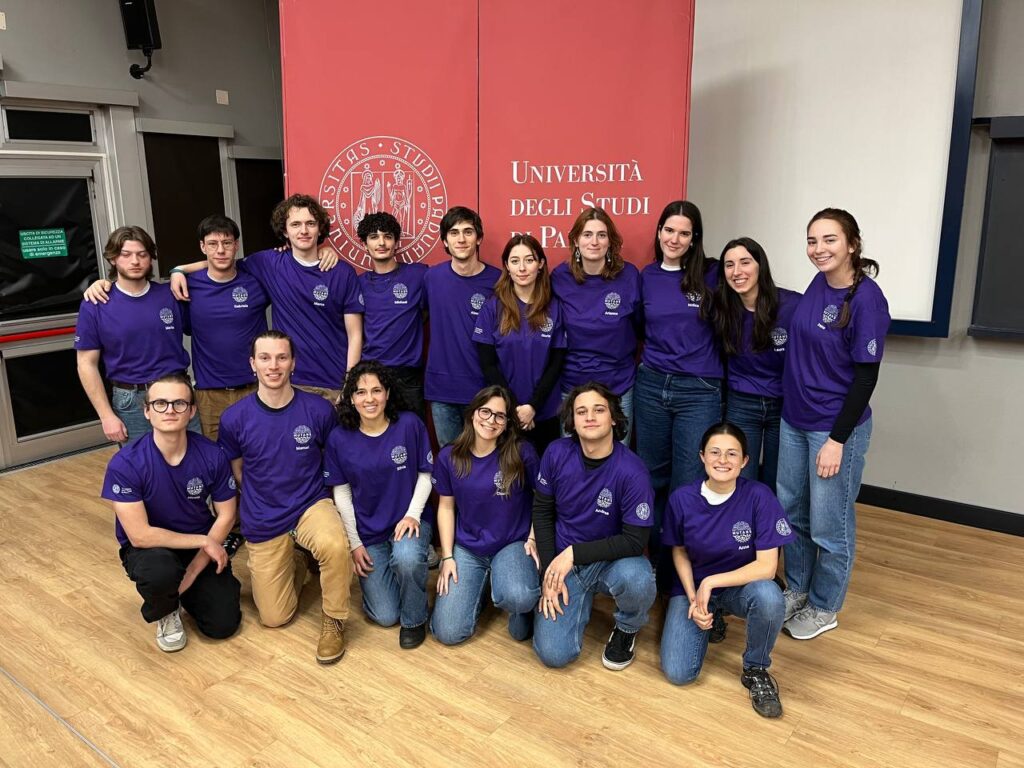
New year, new members. Team 2025 composition increases the multidisciplinarity of Mutans with two new courses: computer engineering and chemistry. Besides these, the group also involves biotechnology, molecular biology and biomedical engineering students.
Have you ever heard about Progeria?
Progeria (Hutchinson Gilford Progeria Syndrome: HGPS) is a rare genetic illness with a frequency of 1 in 4 million newborns. There are around 400 cases worldwide of this disease. Progeria is caused by a mutation that causes the synthesis of progerin, accumulating near the nucleus where it is responsible for compromising nuclear structure, disrupting essential cellular processes, ultimately resulting in premature aging. This disease causes clinical implications generalised to the whole body, except for the nervous system. Particularly, progeria patients suffer from severe cardiovascular complications, which are the main cause of premature death, occurring on average in the early teens.
Ring Bait System: an innovative solution against Progerin accumulation.
We aim to engineer a synthetic protein able to promote progerin degradation.
This chimeric protein is made up of three components:
Linker: protein domain connecting RING and the interactor;
RING domain: labels the protein to be degraded;
Interactor: recognizes and binds the protein to be labeled

Our Plans:
- Yeast: a new model to study progeria. We aim to create a new cellular model that could possibly be employed for chemical testing, which is when a new drug is tested on a simpler model organism, like yeast. Other than that, the yeast, S. cerevisiae is the best organism to test our protein interactor obtained by the bioinformatic team through a molecular biology test called yeast two hybrid.
- Bioinformatics: structural prediction of progerin conformation and the search for a new interactor. Progerin has not been well characterized in its tridimensional structure; this means that we do not know how its amino acids are organised in space. What’s more, the development of the Ring Bait System requires a peptide interactor for progerin. For these reasons, our team is modelling the structure of progerin by employing bioinformatics tools and looking for possibile interactors.
- Mammalian: let’s get the Ring Bait System ready on mammalian cell lines. Our contributors were able to supply us with a HGPS patient primary fibroblasts cell line. This way, we’ll be able to test the whole Ring Bait system in a reliable model.
Our work for inclusivity
Scientific articles can be very overwhelming and difficult to read because they contain many abbreviations and overall complicated data. We believe that science should be available to everybody which is why team Mutans is working on making scientific articles more accessible to those with learning difficulties. We are conducting research to understand better if the simplified scientific texts, in comparison to unmodified articles, actually help those with learning difficulties. Our team is looking for volunteers who would be willing to participate and help us to assess the impact of the changes made to scientific articles. If you are interested in making a contribution you can participate by filling out this form.
Senior scientists
Prof. Livio Trainotti
DiBio – Department of Biology
Massimo Bellato, PhD
DEI – Department of Information Engineering
Prof. Cristiano De Pittà
DiBio – Department of Biology
Raffaele Lopreiato, PhD
DSB – Department of Biomedical Sciences
Prof. Claudia Del Vecchio
DMM – Department of Molecular Medicine
Prof. Barbara Arfé
DPSS – Department of Socialization and Development Psychology
Advisors
Sara Granuzzo, PhD
DSB – Department of Biomedical Sciences
Students
Laura Tonolo
Team Leader
Molecular Biology
Andrea D’Amico
Team Leader
Biotechnology
Anna Cenedese
Biotechnology
Manuel Palamin
Computer Engineering
Gloria De Buzzaccarini
Biotechnology
Michael Bellitto
Biotechnology
Nicolò Donà
Biotechnology
Claudia Sciacca
Biomedical Engineering
Arianna Schiavi
Biomedical Engineering
Mattia Boci
Biotechnology
Marco De Nard
Biotechnology
Irene Apulei
Molecular Biology
Milica Glusac
Biotechnology
Alessio Canazza
Biomedical Engineering
Silvia Capra
Biotechnology
Gabriele Maschio
Chemistry